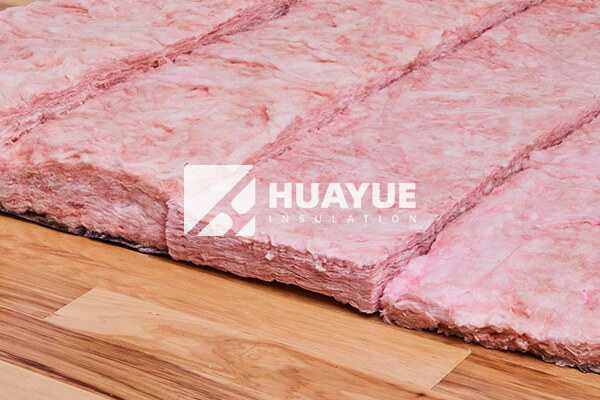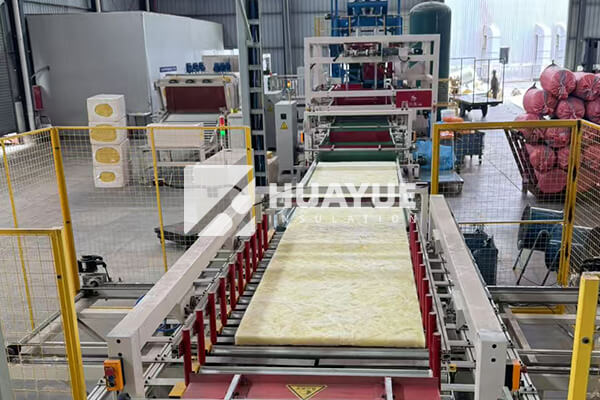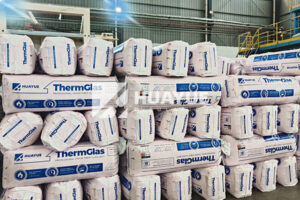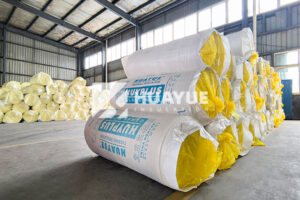Is glass wool insulation dangerous?
People often worry about the safety of insulation materials, and glass wool is no exception. With so many opinions out there, it’s easy to get confused and even scared.
Glass wool insulation from HUAYUE is safe when handled properly, does not contain asbestos, is not radioactive, and poses no long-term health hazards under normal use. Minor irritation during installation can be avoided with basic protection.

I hear many questions from plant engineers and contractors about whether glass wool insulation could harm people or the environment. These worries keep coming up, especially as new safety standards arrive and more facilities look for greener materials. In my own experience working with customers in Germany and around the world, I’ve seen how myths can spread quickly online or through word of mouth. Let me clear up some of these common misconceptions and explain why HUAYUE glass wool continues to be one of the most trusted insulation choices.
Does glass wool insulation contain asbestos or radioactive substances?
Stories about asbestos or radioactivity sometimes make people nervous about insulation products. I remember a customer asking if he should worry about exposure to glass wool because he’d heard “it might be like asbestos.”
HUAYUE glass wool insulation is completely asbestos-free and is not radioactive. It is made from recycled glass, sand, limestone, and soda ash, all tested for safety. The minimum background radiation in sand is negligible, posing no risk.

As someone who manages safety-sensitive projects, I know people compare new insulation to old materials like asbestos. Asbestos was banned in most countries after being linked to serious lung diseases including cancer. Glass wool, made from totally different raw materials, does not contain asbestos in any form. It is produced using clean processes at modern facilities, including at HUAYUE’s certified plants. As for radioactivity, every natural material, including sand, has some trace level—but it’s far lower than what we encounter from the earth or even a flight. There is no scientific basis for worrying about radioactivity in glass wool, and no regulatory body treats it as a radioactive material.
| Property | Glass Wool by HUAYUE | Asbestos Products |
|---|---|---|
| Asbestos Content | 0% | 100% |
| Radioactivity | Negligible, below background levels | Not relevant |
| Safety Class | Classified as safe for use and handling | Banned as hazardous |
Is glass wool insulation a health hazard during use or installation?
Many people worry that the tiny fibers could hurt their health or that there might be dangerous chemicals inside. I’ve been asked if you need special training just to touch it.
Glass wool insulation may cause mild skin or respiratory irritation when handled, but this is a mechanical effect, not a chemical or allergic reaction. Wearing gloves, long sleeves, and a dust mask is usually enough for safe handling.
HUAYUE Glass Wool Application in Industrial Storage Tanks
In plant environments, safety is always the top concern. I always remind my team, and customers like Hans Müller, that HUAYUE glass wool uses formaldehyde-free binders and is produced to strict global standards, including ISO certifications. Irritation can happen if fibers get on skin or in the air during cutting or fitting, but this is easily handled with basic personal protective equipment (PPE): gloves, a mask, and long sleeves. This irritation is not an allergic reaction and it doesn’t cause chronic issues. To be clear, decades of testing show no link between glass wool and long-term health problems under safe working conditions. In regular use, once installed and covered, exposure is almost zero.
| Issue | Risk Level | How to Avoid |
|---|---|---|
| Skin or eye irritation | Low | Wear gloves, eyewear |
| Inhalation (during install) | Very low | Use a dust mask |
| Chronic exposure in use | None | Not applicable |
Is glass wool insulation bad for the environment?
The idea that industrial insulation hurts the planet is becoming a bigger concern. I often hear, “Is this material really green? Will it make my facility less sustainable?”
Glass wool insulation from HUAYUE supports environmental goals because it is recyclable, made from recycled glass, and saves far more energy over its lifetime than its production requires. Modern binders make it even greener.
Glass wool’s eco-friendliness matters a lot for companies looking to reduce their carbon footprint. At HUAYUE, we manufacture using recycled glass and eco-friendly binders, making our glass wool part of the circular economy. Once installed, it dramatically cuts how much energy a building or tank uses to stay hot or cold, saving far more energy than what was used to make it. When it eventually needs to be replaced, the material can often be recycled or safely reused. That’s why so many of our clients in Europe and North America pick HUAYUE glass wool for LEED-certified and other sustainable projects.
| Stage | Environmental Impact | HUAYUE Approach |
|---|---|---|
| Production | Moderate energy required | Uses recycled materials; modern, efficient lines |
| Use (Lifetime) | Big energy savings | Cuts heating/cooling energy |
| Disposal | Usually recyclable | Take-back and recycle programs |
How hard is it to install glass wool insulation?
Some people worry glass wool is hard to cut or fit, maybe too delicate or messy compared to rigid panels or sprays.
Glass wool insulation by HUAYUE is lightweight, easy to cut, and quick to install using common tools. With simple guides, contractors or plant staff can achieve a tight fit for thermal and noise control.
When I first helped a team switch from outdated mats to modern glass wool, they were surprised by how easy the new material was to handle. No specialized skills are needed—just sharp scissors or a knife, basic PPE, and a bit of planning. Rolls, boards, and slabs are all designed for quick measuring and fitting to odd shapes and corners. In tanks or difficult spaces, glass wool is especially handy because it compresses and flexes as needed. Installation can be done by contractors or in-house teams with standard insulating experience. And the results are consistent—solid coverage, no cold bridges, and strong acoustic performance, which is critical for industrial settings.
| Task | Difficulty Level | Tools Needed | Time Required |
|---|---|---|---|
| Measuring & Cutting | Easy | Knife, ruler | Short |
| Fitting in place | Easy | Hands, studs | Short |
| Safety precautions | Basic PPE | Gloves, mask | Standard |
Conclusion
Glass wool insulation from HUAYUE is safe, asbestos-free, easy to install, environmentally friendly, and reliable for long-term performance in industrial settings.
You may also be interested in:
Ready to Get Started?
Get in touch with our experts for personalized solutions tailored to your needs.
Get Free QuoteLatest Articles

Glass Wool Fire Rating: How Safe Is Your Insulation?
Dec 25, 2025
Let's Work Together
Ready to take your business to the next level? Get in touch with our team of experts and let's discuss how we can help you achieve your goals.
Get Free Solutions






